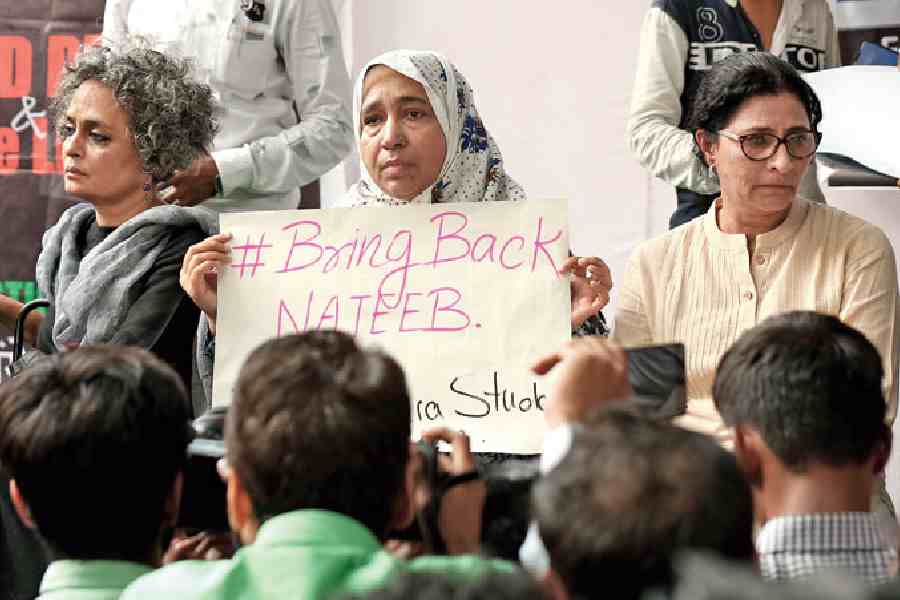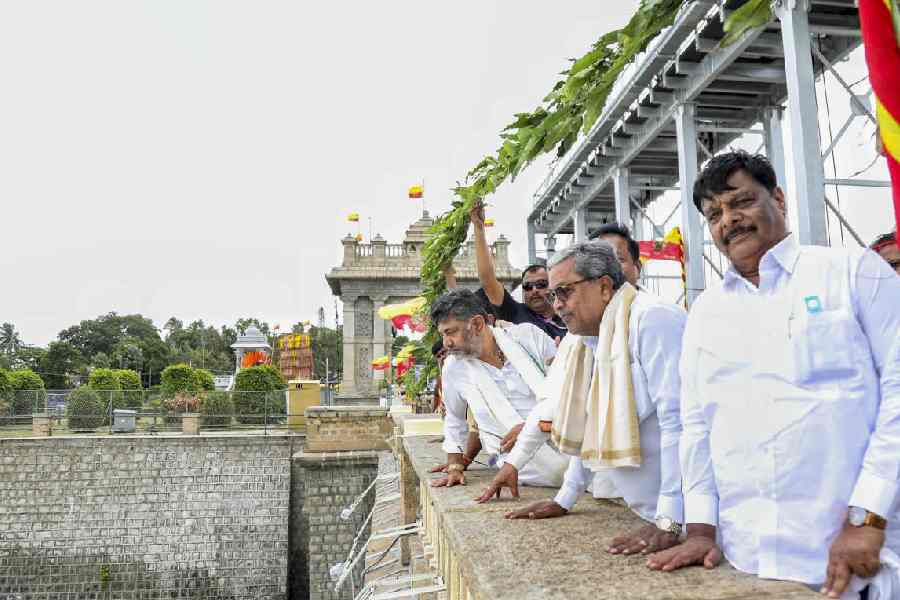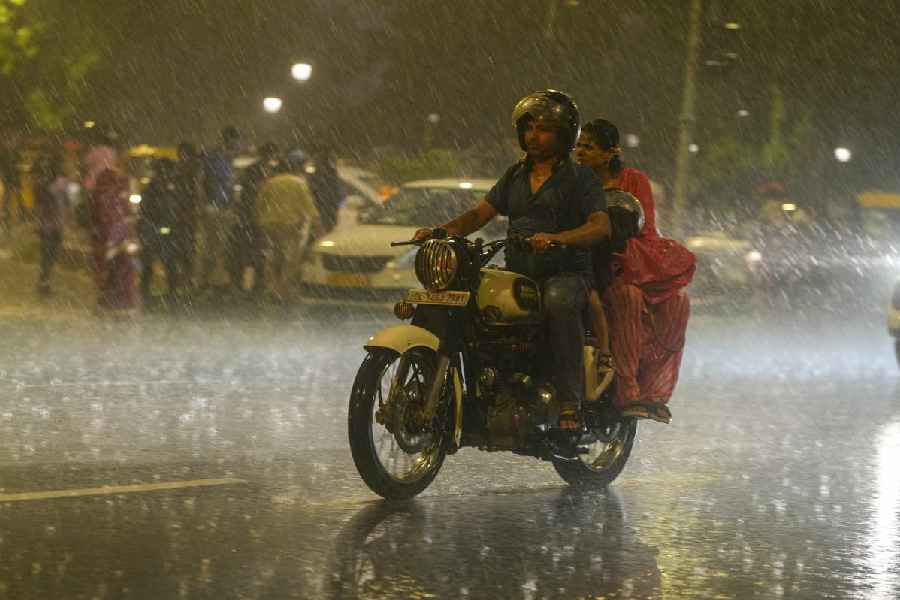 |
| Students of DAV Public School-Dugda have a brush with katni painting on the boundary wall of their cradle on Sunday. Picture by Pankaj Singh |
If you thought tribal art — gasping for breath due to insufficient state and popular patronage and overlooked by urban art galleries — was in danger of going the way of the dodo and the dinosaur, take heart.
DAV Public School, Dugda, 25km from Bokaro, is promoting two indigenous art forms — katni and kohbar, also known as kohbar ghar — on its boundary wall as murals.
Stylised motifs of peacock, deer, fish, oxen, birds, tortoises, flowers, crops and more vie for attention across 600sqft (10ft height and 60ft length) of the wall.
The tribal art forms have also entered classrooms. DAV Dugda art teacher Ajit Kumar Andia trains students from Classes VI to XII in katni and kohbar.
To reach out to the whole virtual world out there, the school will upload pictures of tribal art on its upcoming website.
Going further, school principal Ashutosh Mairh has written to the regional officer of Central Board of Secondary Education (CBSE) Patna, S.U. Sorte and regional officer of Allahabad Piyush Sharma, requesting these tribal art forms be included in the CBSE syllabus.
Art teacher Andia said he was inspired by wall paintings on village homes in Hazaribagh district on a visit.
“Katni and kohbar are mostly painted by village women, especially tribals,” he said. “After harvest, women embellish the walls of mud homes with drawings of plants, animals, birds and common animals such as the cow, goat, fish, peacock, cock and pigeon. These showcase warmth and diversity of rural life,” he said.
Katni, which comes from the word katai (cutting), is also the name of a district in Madhya Pradesh, famed for rock paintings of similar animal motifs from 4,000 BC to 200 BC.
Kohbar, a well-known art form of Bihar’s Mithila region, is also called the painting of blessings during marriages. Symbols and motifs — lotuses, bamboo stalks, birds, fish, sun and moon — bless newly weds with harmony, prosperity and happiness. Human motifs of grooms on horseback are common.
The spread and influence of tribal art across states — say Bihar and Jharkhand — also traces a fascinating journey of groups of people across geographies.
In villages, painters use natural colours such as juice of leaves for green, red earth, turmeric and coal. The school didn’t.
“We were faithful to motifs and styles. But given the fact that the boundary wall is exposed to the vagaries of weather, we used enamel paint,” Andia said.
“Jharkhand has immense cultural richness. Unfortunately, you don’t get much knowledge on katni and kohbar on the Internet. We want to promote these art forms in our small way. We have also requested CBSE to include them in the syllabus. We hope the state government gives village artists their due,” said principal Mairh.
He voiced the urgency behind the conservation of paintings.
“Village homes are fast getting concrete walls. In another generation or two, women will forget to make the paintings unless the art forms get state support,” the principal said.










